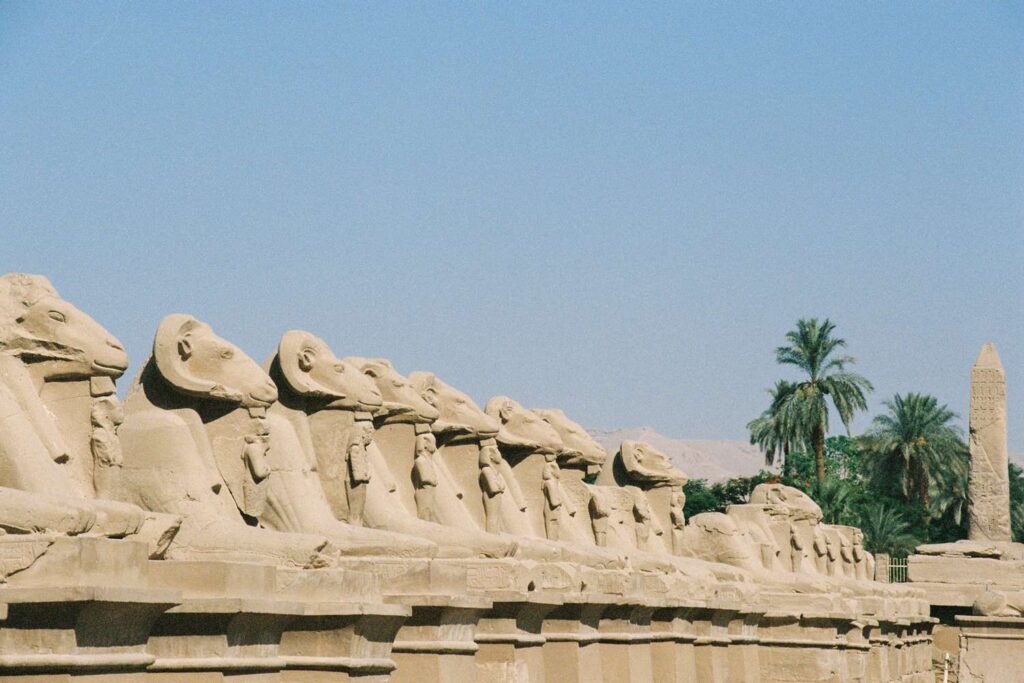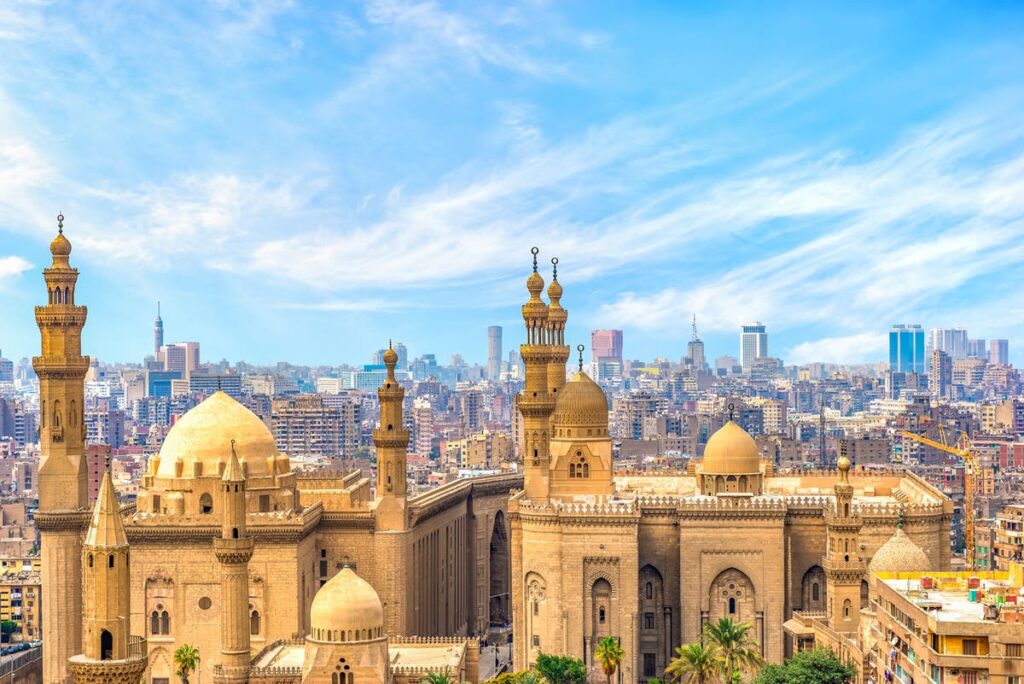:max_bytes(150000):strip_icc():format(jpeg)/TAL-amon-ram-god-statues-luxor-temple-LUXOREGYPT0325-49215c49a93a45bdbb0294567c72a1dc.jpg)
The houses in Luxor seem to strive skyward, forever optimistic. From their roofs, brick columns rise to the heavens, sprouting rebar in anticipation of another layer of construction. Homeowners don’t have to pay taxes on buildings that remain a work in progress, and many remain hopeful that a windfall might facilitate a new addition. From 1570 to 1069 B.C., this city was the capital of Egypt, and every pharaoh who came to power launched a new construction project within its sprawling temple complex. For half a millennium, it was the center of a civilization. Now, on the strength of a new tide of visitors, the city continues to grow.
In its heyday, Luxor was known as Wase—the city of the scepter. The king of the gods, Amon, was said to reside there, along with a cult devoted to him. The Greeks later renamed the place Thebes—a corruption of the name of a local temple, perhaps. Nowadays we call it Luxor, from the Arabic Al-‘Uqsur, meaning “the palaces.” My guides said that the name Luxor is the root from which the word luxurious grew. If this is the case, the broad avenues running along the banks of the Nile and the evidence of the magnificently debauched festivals that took place there—including points of rest along the procession route for revelers to consume wine—would go a long way toward explaining why.
The pharaohs’ constant expansion of their temples to Amon resulted in the sandstone Luxor and Karnak complexes on the east bank of the Nile, which remain awesome even today. As do the Colossi of Memnon, so called because graffiti misidentified them as statues of the Greek god Memnon, instead of the pharaoh Amenhotep III, who built them in his own image around 1350 B.C.
Chris Wallace
Like so many rulers of his dynasty, including his famous grandson Tutankhamen, Amenhotep III was entombed just west of Luxor, in the steep limestone cliffs known as the Valley of the Kings—a site that was known to travelers at least as far back as the time of Christ. These archaeological treasures have attracted visitors ever since—from early tourists from Greece to the Roman emperor Hadrian, who visited in the second century, all the way up to Roger Moore, who, as James Bond, filmed “The Spy Who Loved Me” in Luxor in the 1970s.
Perhaps the most famous fictional character to visit Luxor was Hercule Poirot, who, along with a cast of other characters, stayed at the grand old Winter Palace hotel before boarding the Sudan steamship in a TV adaptation of Agatha Christie’s “Death on the Nile.” Christie’s stories have been kinder to the travel industry than time has been to her settings: the Winter Palace and its famous gardens on the eastern bank of the Nile are today a far cry from their glory days, though it is rumored that a recent change in ownership will result in a refurbishment. Which it may need to keep up with the ambitious Four Seasons under construction next door. A new highway and bridge over the Nile have also gone up since the pandemic, and renovations small and large seem to add to the city’s upward thrust.
A wave of pent-up demand post-COVID, along with anticipation for the Grand Egyptian Museum in Giza—which finally opened its doors at the end of 2024—meant that last year Egypt was among the most sought-after destinations in the world. In recent months, concerns about the conflict in Gaza spilling over into Egypt lessened, and visitor numbers are projected to grow yet higher in 2025.
If Poirot were to come back to the city today, he might find that the contemporary demimonde—and those who follow in his footsteps on a cruise up the Nile from Luxor to Aswân, like I did—stay on the western side of the river. There, through the sugarcane fields just west of town, sits Al Moudira, which in Arabic means “the boss.” That’s the nickname of the hotel’s founder, Zeina Aboukheir, a Lebanese-born artist and designer who, in 1999, began building this series of soaring adobe suites and villas in a walled garden that was then a patch of desert. Aboukheir remains Al Moudira’s guiding spirit, and today the hotel is a favorite of artists, musicians, and writers from around the world. They gather around the pool, in the courtyard gardens, or in the tiled-floor dining room for Nile perch, moussaka, and my recent obsession, the restaurant’s tomeya—a creamy garlic dip.
Chris Wallace
Fashion designer Rick Owens, who titled his fall 2023 collection “Luxor” and calls the city his winter retreat, is a regular guest at Al Moudira. “It’s the closest thing I could find to the Chateau Marmont of the late eighties,” he told me. “Unassuming and grand at the same time.”
Al Moudira also has terrific guides at its disposal. I took one of the best excursions I can remember with Ahmed Hammam, who took me past the Colossi to the Valley of the Kings, then through the temple of Luxor. Our finale was a walk down the Avenue of the Sphinxes, a thoroughfare connecting the temples of Luxor and Karnak that’s lined with the remnants of more than a thousand statues. It runs for nearly two miles through the center of the city—though today, only ticket holders can access the most popular stretch.
Seen from there, the sandstone pylons of Luxor’s temple rose to an open sky, eternally patient in the dusty, pearlescent light. Men in their elegant djellabas moved bushels of emerald-colored sugarcane in carts pulled by donkey or motorcycle. Women in candy-hued headscarves watched them from the back of embellished tuk-tuks. And the regular rush of tourists whizzed through town in horse-drawn carriages and air-conditioned vans, looking forward to their journeys up the Nile, or, on their visits to the temples, to wandering—luxuriously—back through time.
A version of this story first appeared in the May 2025 issue of Travel + Leisure under the headline “Style on the Nile.”
Premium IPTV Experience with line4k
Experience the ultimate entertainment with our premium IPTV service. Watch your favorite channels, movies, and sports events in stunning 4K quality. Enjoy seamless streaming with zero buffering and access to over 10,000+ channels worldwide.

















